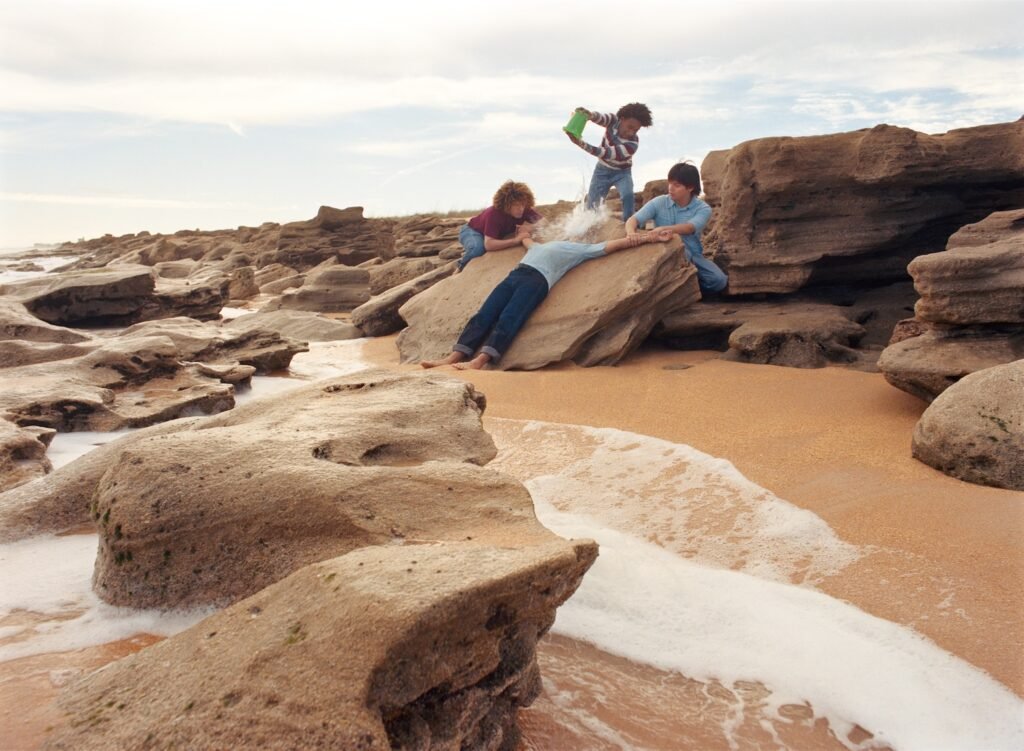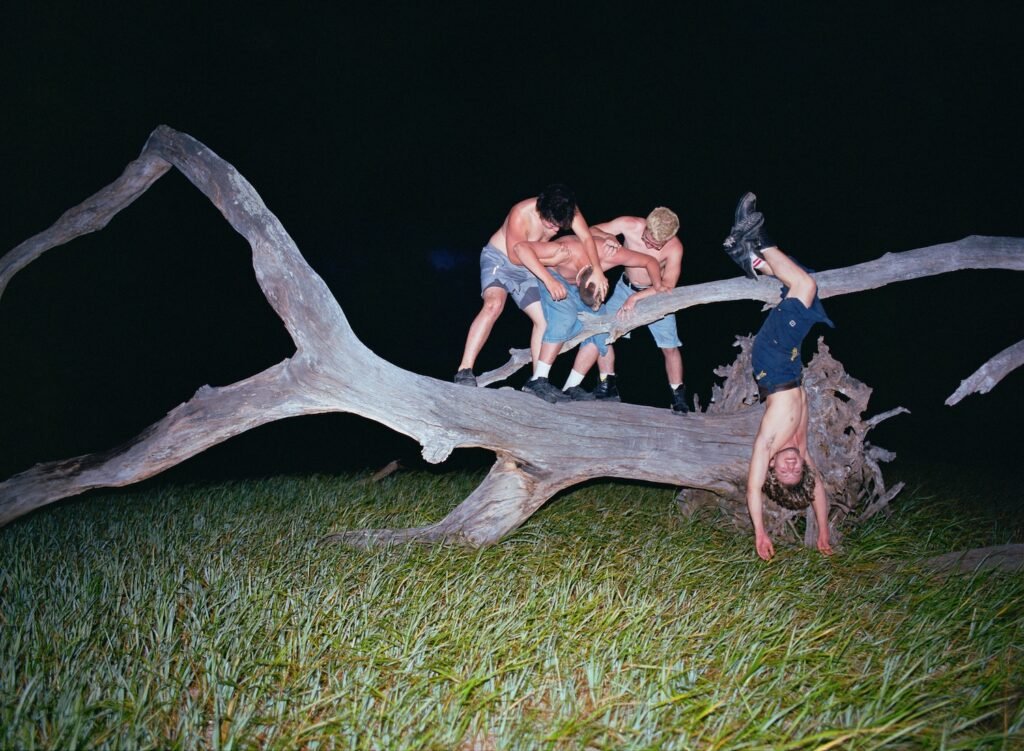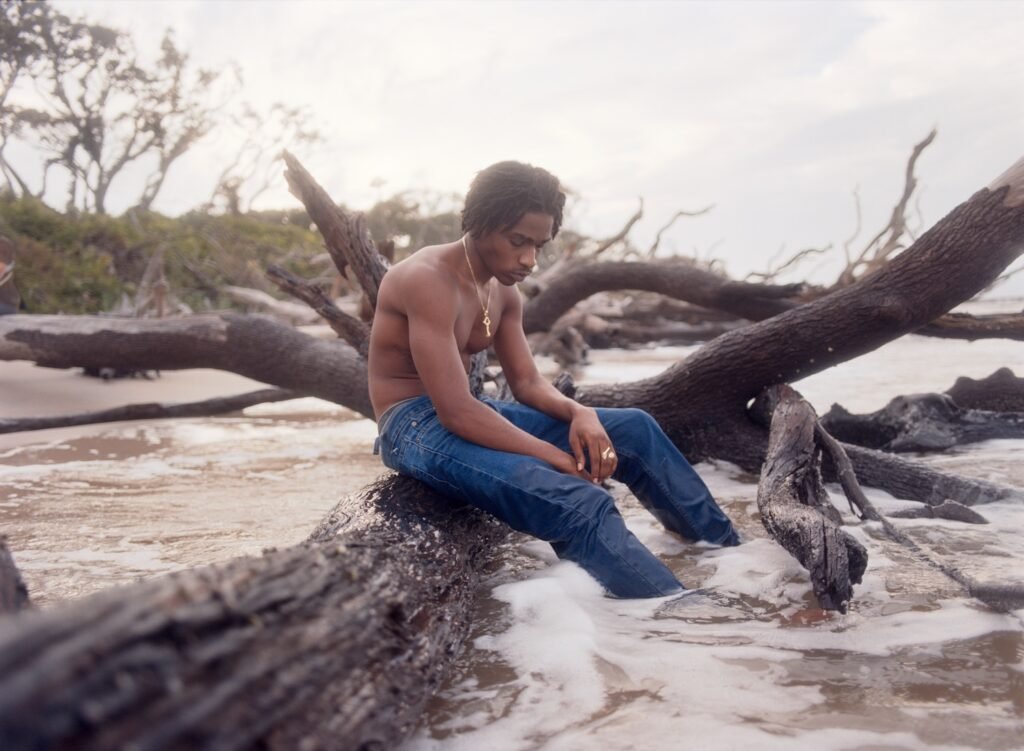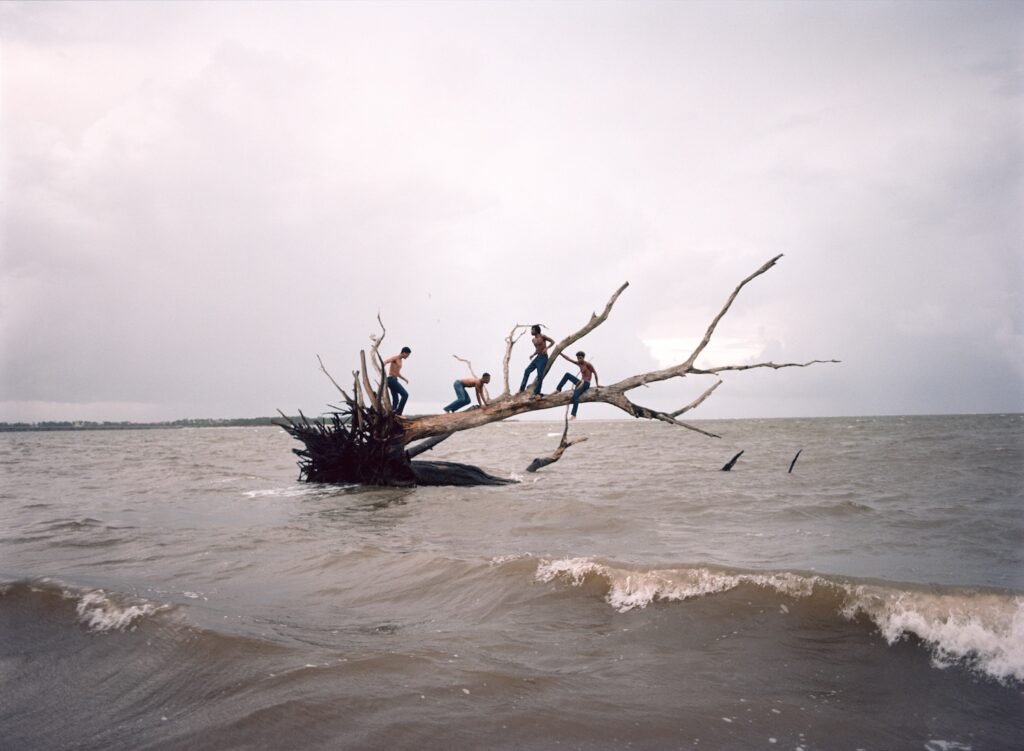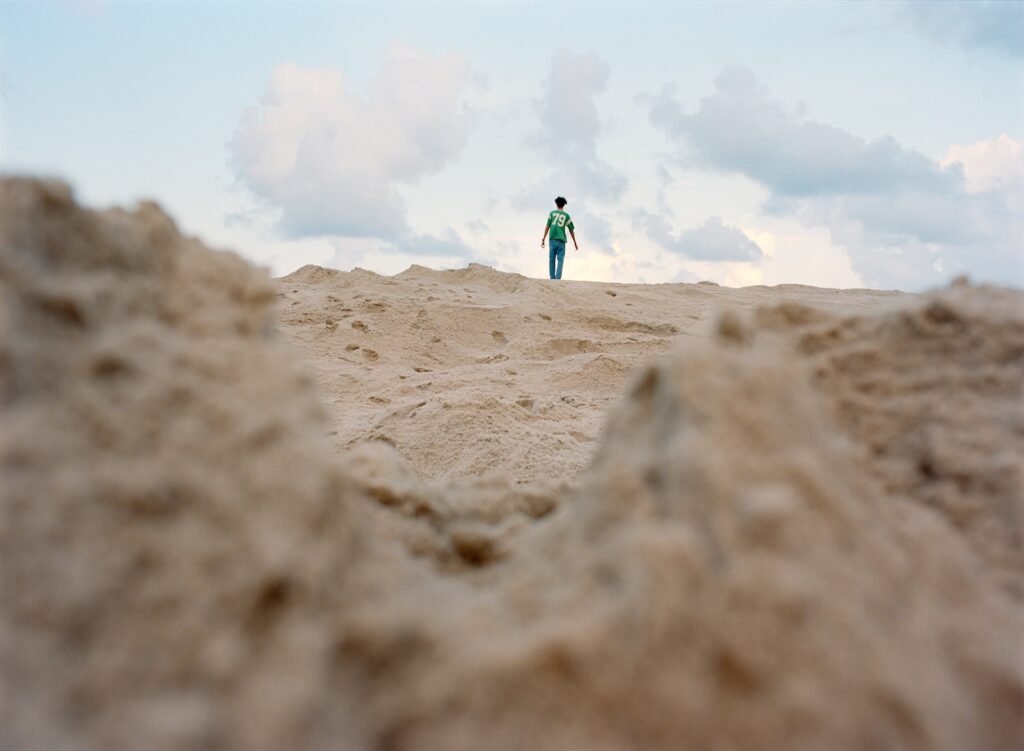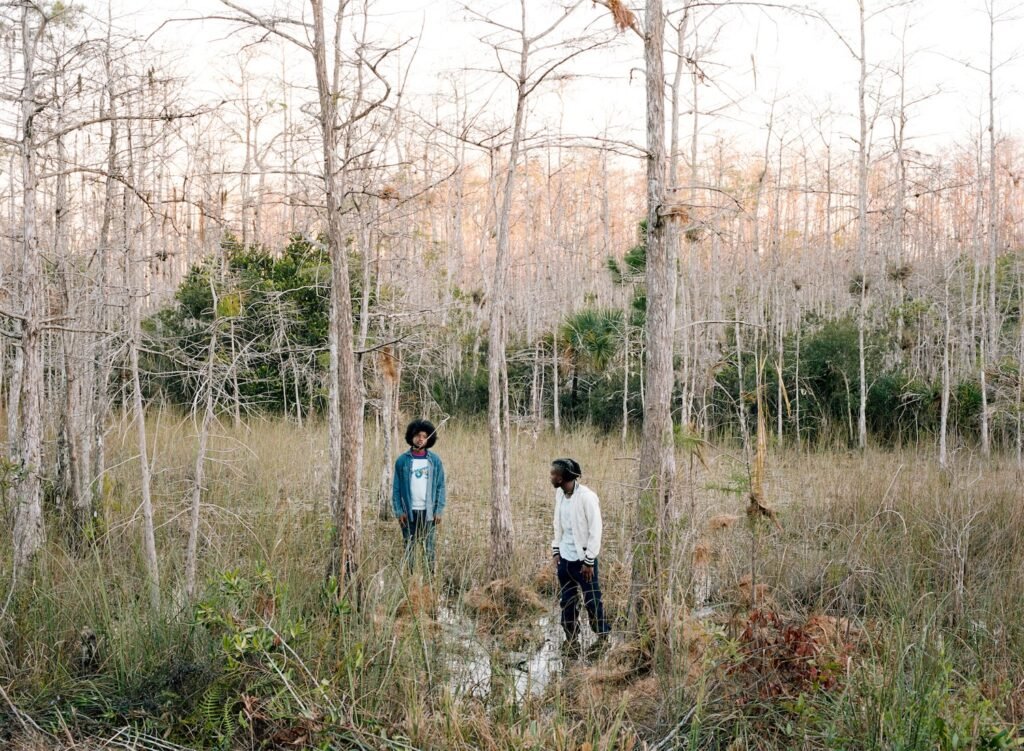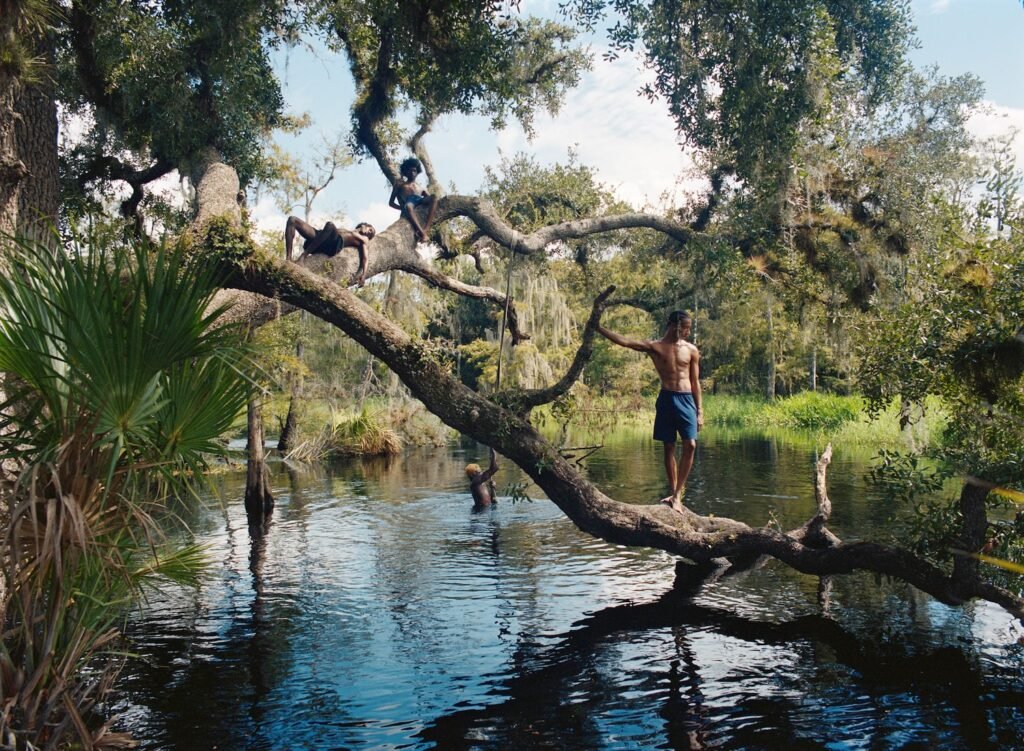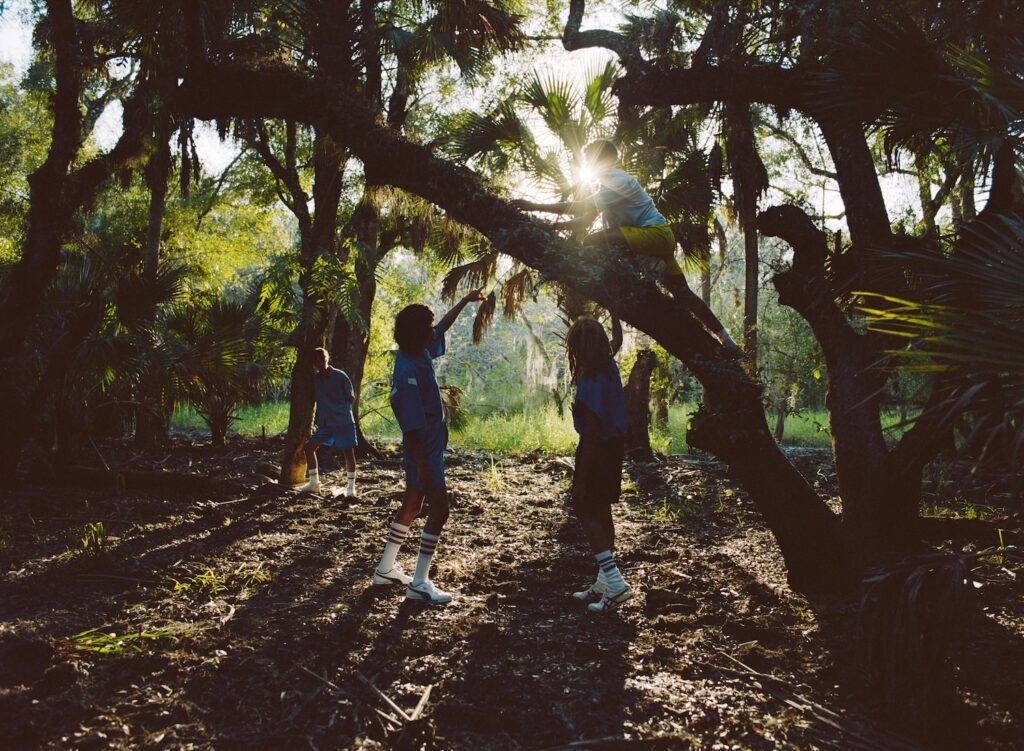Between 2020 and 2025, Josh Aronson traveled Florida’s backroads to stage a new vision of the South. In Florida Boys, groups of young men, many first-generation or immigrant youth from Miami, gather in forests, springs, and swamps to perform gestures of tenderness and play. Shot on film and composed like cinematic paintings, the images build intentional fictions that imagine a softer, more communal masculinity. Rooted in the landscape where the artist grew up, Florida Boys transforms Florida’s contradictions of beauty and decay, paradise and peril into a meditation on belonging.
Across the series, Aronson turns the camera into a meeting place. Strangers come together in places they’ve never been. Most photographs begin from a storyboarded idea, yet the final composition emerges through collaboration. The boys become co-authors, steering the staged scene toward gestures and relationships that feel true. The humid light, the dense foliage, the feeling of endless summer—all become collaborators too, transforming images of familiar actions into something almost mythic. Each photograph is an act of imagination, re-staging familiar scenes of American boyhood with new characters, new emotions, and new possibilities.
The photographs draw from the visual languages of Southern photography, coming-of-age cinema, and tableaux painting. They grow from the lineage of staged narrative photography shaped by artists like Justine Kurland, Ryan McGinley, Gregory Crewdson, and Jeff Wall, yet root that visual language in the humidity and hybridity of Miami’s youth culture. What emerges is a way of picturing young men of color at rest, in ease, and at play within the landscape—images of tenderness and belonging rarely offered in the history of art or representations of the American South.
For Aronson, photography is a tool to reclaim a sense of belonging in a place defined by contradiction. By re-staging the Southern image with empathy and inclusion, he asks what kind of future can be imagined when masculinity, like the landscape itself, is allowed to soften.
“Photography, for me, is about doing a dance with control,” Aronson says.
“Working in staged narrative, I’m able to exercise a kind of control I couldn’t if I were working in a documentary style. That control allows me to build a world that suits my needs and my ideas of utopia. As a kid, I often felt powerless when surrounded by other young men—I wasn’t the prototypical, sports-playing, jock type, and that made me feel out of place among my peers. In my photography, I’m able to gather a group of people and curate a scene or experience for us. That level of control gives me an opportunity to psychologically revisit that feeling and visualize an alternative.”
Josh Aronson (b. 1994, Canada) is a Miami-based artist whose work explores masculinity and landscape in the American South. His photographs have appeared in The New York Times, The Paris Review, Financial Times, Frieze, Italian Vogue, Teen Vogue, Dazed, i-D, British Journal of Photography, Document Journal, and Apartamento.


